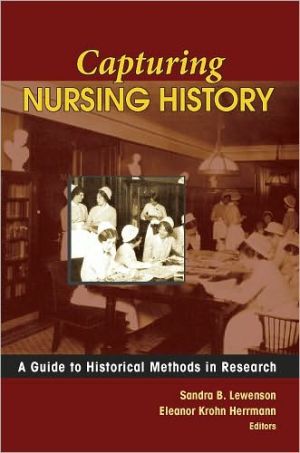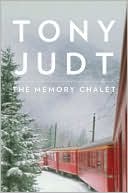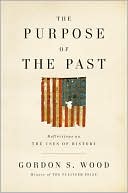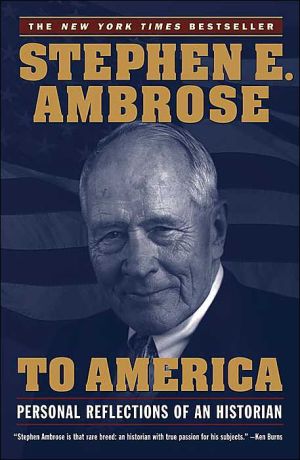Capturing Nursing History: A Guide to Historical Methods in Research
"\ Winner of the 2008 AJN Book of the Year Award!\ Named an Outstanding Academic Title for 2008 byChoice!\ This well written and well edited book fills a unique gap....[one of the] precious few [books] that focus on science or medicine and [one of] even fewer that cover the history of nursing.(Three Stars)--Doody's Book Review Service\ While there have been many research texts in the nursing literature, and nursing history is both taught in courses and of popular interest to practicing...
Search in google:
Winner of the 2008 AJN Book of the Year Award!"This well written and well edited book fills a unique gap....[one of the] precious few [books] that focus on science or medicine and [one of] even fewer that cover the history of nursing."(Three Stars)--Doody's Book Review ServiceWhile there have been many research texts in the nursing literature, and nursing history is both taught in courses and of popular interest to practicing nurses, there has never been a hands-on text that describes the process of doing historical research in nursing. This book, contributed by well-known and respected nurse historians, provides the necessary direction, guidance, and examples needed to conduct historical research. It covers such topics as historiography, biographical research, using artifacts in historical research, doing archival and other data searches, doing international historical research, and locating funding sources for historical research. Case studies will be used throughout to illustrate various methods and describe how, why, when, and where historical research is used in nursing.Features of this edition:Provides direction and tools for conducting historical researchDescribes types of research, including biographical and oral historiesCovers frameworks used to study historical events, such as social, political, feminist, intellectual, and culturalAddresses contemporary issues such as preserving and storing digitalized and tape-recorded data and obtaining institutional review board (IRB) approval for research, and addressing ethical and legal issues in historical researchIncludes case studies that provide a "how-to" guide to conducting research Doody Review Services Reviewer:Lisa Ennis, MA, MS(University of Alabama at Birmingham)Description:This is an introduction to the art and method of historical research as it applies to nursing history. Organized into 14 chapters and three appendixes, the work provides readers with an excellent overview of both the methods and means of doing history research.Purpose:The book deftly fulfills its twofold purpose of introducing readers to the field of nursing history as well as preserving the wisdom of nursing history scholars. The chapters, all written by accomplished nurse historians, cover a variety of topics from collecting oral histories to getting historical projects funded giving the work both depth and breadth.Audience:Intended for both "new and seasoned nurse historians," the book is accessible to any level of readers. Although each chapter is written by a different author, the editors have maintained an easy to read flow throughout. Features:The editors, both experienced historians, have done a good job of addressing the variations within history as well as the issues that surround being an ethical historian. For instance, working with primary sources, archival materials, and artifacts is covered as is oral history methods and biographies. The editors also cover matters such as securing funding and ethical guidelines. Three useful appendices covering are included in the book as well.Assessment:This well written and well edited book fills a unique gap. While there are a number of good books on doing historical research, there are precious few that focus on science or medicine and even fewer that cover the history of nursing. Further, the tone and style add to the book's value as a resource.
Contributors viiForeword Joan E. Lynaugh ixPreface Sandra B. Lewenson Eleanor Krohn Herrmann xiAcknowledgments xixWhy Do Historical Research? Sandra B. Lewenson Eleanor Krohn Herrmann 1Conceptual and Methodological Issues in Historical Research Patricia D'Antonio 11Doing Historical Research Sandra B. Lewenson 25Using Frameworks in Historical Research Joy Buck 45Critical Issues in the Use of Biographic Methods in Nursing History Sonya J. Grypma 63Oral History Research Geertje Boschma Margaret Scaia Nerrisa Bonifacio Erica Roberts 79Reflections on Researcher Subjectivity and Identity in Nursing History Geertje Boschma Sonya J. Grypma Florence Melchior 99Historical Research in Developing Countries Eleanor Krohn Herrmann 123Working With Primary Sources: An Overview Keith C. Mages Julie A. Fairman 129"The Truth About the Past?" The Art of Working With Archival Materials Christine Hallett 149AboutArtifacts Eleanor Krohn Herrmann 159Ethical Guidelines and Standards of Professional Conduct Nettie Birnbach 167Using Ethical Guidelines and Standards of Professional Conduct Sandra B. Lewenson Eleanor Krohn Herrmann 173Funding for Historical Research Jean C. Whelan Cynthia Anne Connolly 181Artifacts: Additional Resources Eleanor Krohn Herrmann 199Nursing History Centers, Museums, and Archives Janet L. Fickeissen 201Nursing History Internet Sites Janet E. Fickeissen 217Index 229
\ From The CriticsReviewer: Lisa A Ennis, MA, MS(University of Alabama at Birmingham)\ Description: This is an introduction to the art and method of historical research as it applies to nursing history. Organized into 14 chapters and three appendixes, the work provides readers with an excellent overview of both the methods and means of doing history research.\ Purpose: The book deftly fulfills its twofold purpose of introducing readers to the field of nursing history as well as preserving the wisdom of nursing history scholars. The chapters, all written by accomplished nurse historians, cover a variety of topics from collecting oral histories to getting historical projects funded giving the work both depth and breadth.\ Audience: Intended for both "new and seasoned nurse historians," the book is accessible to any level of readers. Although each chapter is written by a different author, the editors have maintained an easy to read flow throughout. \ Features: The editors, both experienced historians, have done a good job of addressing the variations within history as well as the issues that surround being an ethical historian. For instance, working with primary sources, archival materials, and artifacts is covered as is oral history methods and biographies. The editors also cover matters such as securing funding and ethical guidelines. Three useful appendices covering are included in the book as well.\ Assessment: This well written and well edited book fills a unique gap. While there are a number of good books on doing historical research, there are precious few that focus on science or medicine and even fewer that cover the history of nursing. Further, the tone and style add to the book's value as a resource.\ \








